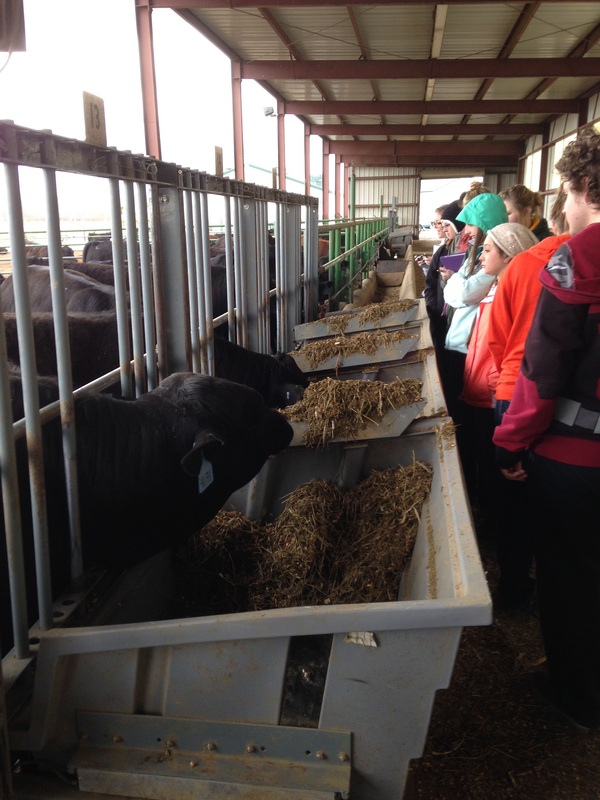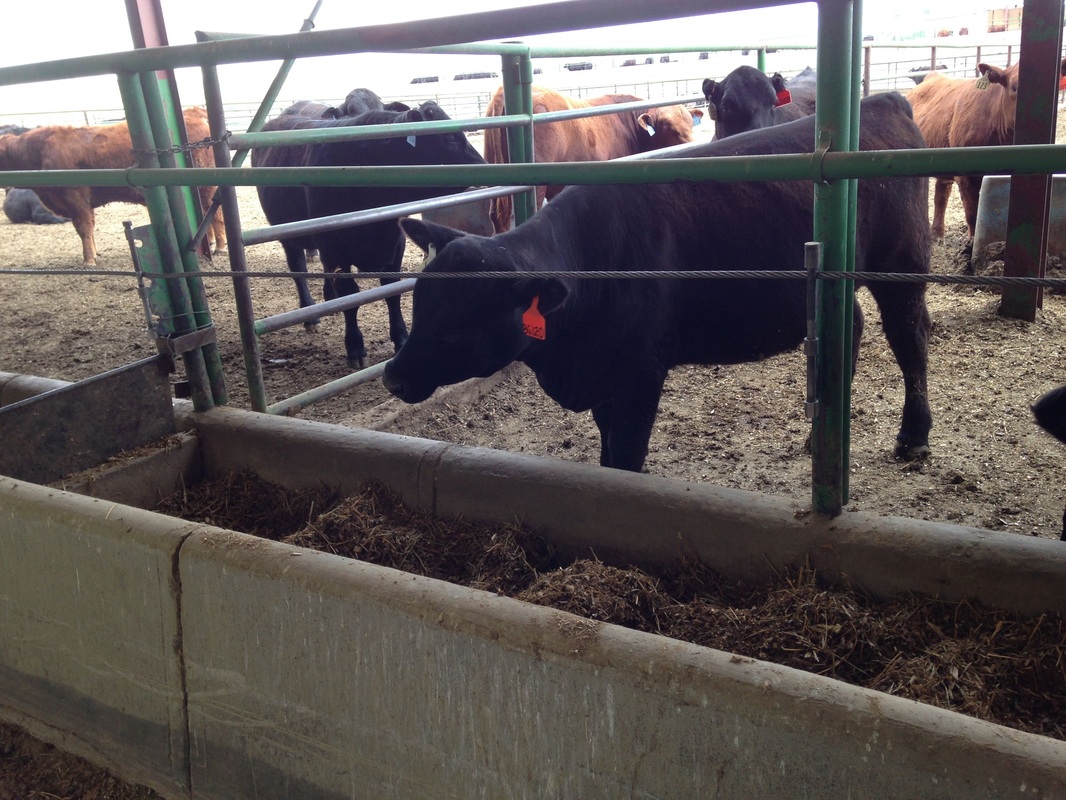|
Watch video coverage of Colorado State University's Seedstock Merchandising Team's 39th Annual Bull Sale. The students chose yearling Hereford and Angus bulls and heifers from the CSU to prep and fit for their sale.  A purebred Hereford bull from the CSU herd in a pen at the 39th annual bull sale waiting to be sold. Photo credit: Dixie Crowe. A purebred Hereford bull from the CSU herd in a pen at the 39th annual bull sale waiting to be sold. Photo credit: Dixie Crowe. When people walk into the meat section in any market, many have an expectation of finding fresh, affordable, lean red meat. Cattle producers go through many steps to bring the final product from farm-to-table. The starting point is in selection of purebred animals by the seedstock producers. Advances in understanding heritability of specific traits through genetic selection have allowed producers to select for desirable traits such as ease of calving and growth rates after a calf is weaned from it’s mother. Colorado State University has it’s own purebred Angus and Herford herds that students on the Seedstock Merchandising Team directly select yearling bulls and heifers from each year to sell at their annual production sale held the fourth Saturday in March. Dr. Shane Bedwell, animal science instructor and livestock judging coach at CSU, recently took his livestock practicum class to CSU’s agricultural resource development education campus. This used to be known as the CSU farm, which has moved from being on-campus where Morgan Library now sits in the early Colorado Agricultural College days, to a near-campus location, and finally in the 1990s north of town. The ARDEC campus houses soil and crop sciences as well as cattle, sheep and swine herds. One thing the campus allows researchers and students to study is feeding efficiency, the conversion of pounds of food into pounds of muscle in cattle through residual feed intake studies. Low RFI numbers tells producers that an animal has high efficiency, eating less than expected, but still gaining weight. Bulls and heifers with low RFI’s have more value at auction because they may pass these genetic components on to their offspring although it is also important to understand there are 25 gene markers that explain feed efficiency. “A one percent reduction in feed intake would account for more than $100 million in annual savings in production costs in Colorado alone,” said Dr. Bedwell. ARDEC uses Grow Safe technology to measure actual feed intake for each animal instead of calculating an average consumption for a pen of animals based on the pounds of feed put out in the feeding bunk. The RFI bunks are filled with a certain number of pounds of feed. Each animal is fitted with a radio frequency identification tag. The system tracks when the animal feeds, how much it eats at each feeding, how long it eats at the bunk, and the data is transmitted automatically to a computer spreadsheet in real time. At the university level, this helps researchers develop rations to optimize nutrition and it supplies data for RFI on specific animals, which in turn helps with selection for breeding higher value seedstock sold to commercial producers, and ultimately the quality of the product that the consumer buys in the store, although that encompasses many more steps than can be covered here. Cattle that feed from a traditional bunk have estimated feed intake numbers based on pounds of feed divided by number of animals in the pen. This doesn't tell producers if the cattle are truly efficient or if they are more aggressive at the bunk. Photo credit: Dixie Crowe. The equipment is expensive and the process is more labor intensive than traditional feeding since the feed bunks must be filled two-to-three times a day. Only seven to eight universities have this system. CSU is unique in that it allows producers to test their cattle at their facility. This not only adds value to the cattle for the seedstock producer, but also adds important information to purebred cattle associations’ databases. It also adds value to student education in animal sciences.
0 Comments
Leave a Reply. |




 RSS Feed
RSS Feed